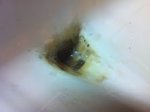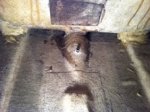Cupcake
PaddleHand
I purchased this 1979 Laser for $200 and am in the process of updating and repairing some stuff. The cockpit bailer hole is totally blocked from both sides with fiberglass resin and some cloth along the bottom of the eliptical well area. My question is... if I drill, grind, sand away all but the two hole that align for the drain, what are all the parts I need to completely redo the entire bailer? Should I put in an autobailer? I will not be racing this boat. Also, my mainsheet block is original and I am wondering if updating to a ratcheting block like the Ronstan Orbit 55 will be less work holding the sheet? And... what is the thinking on Boomvang, cunningham, outhaul updates on a boat this old?

thanks all!
thanks all!





